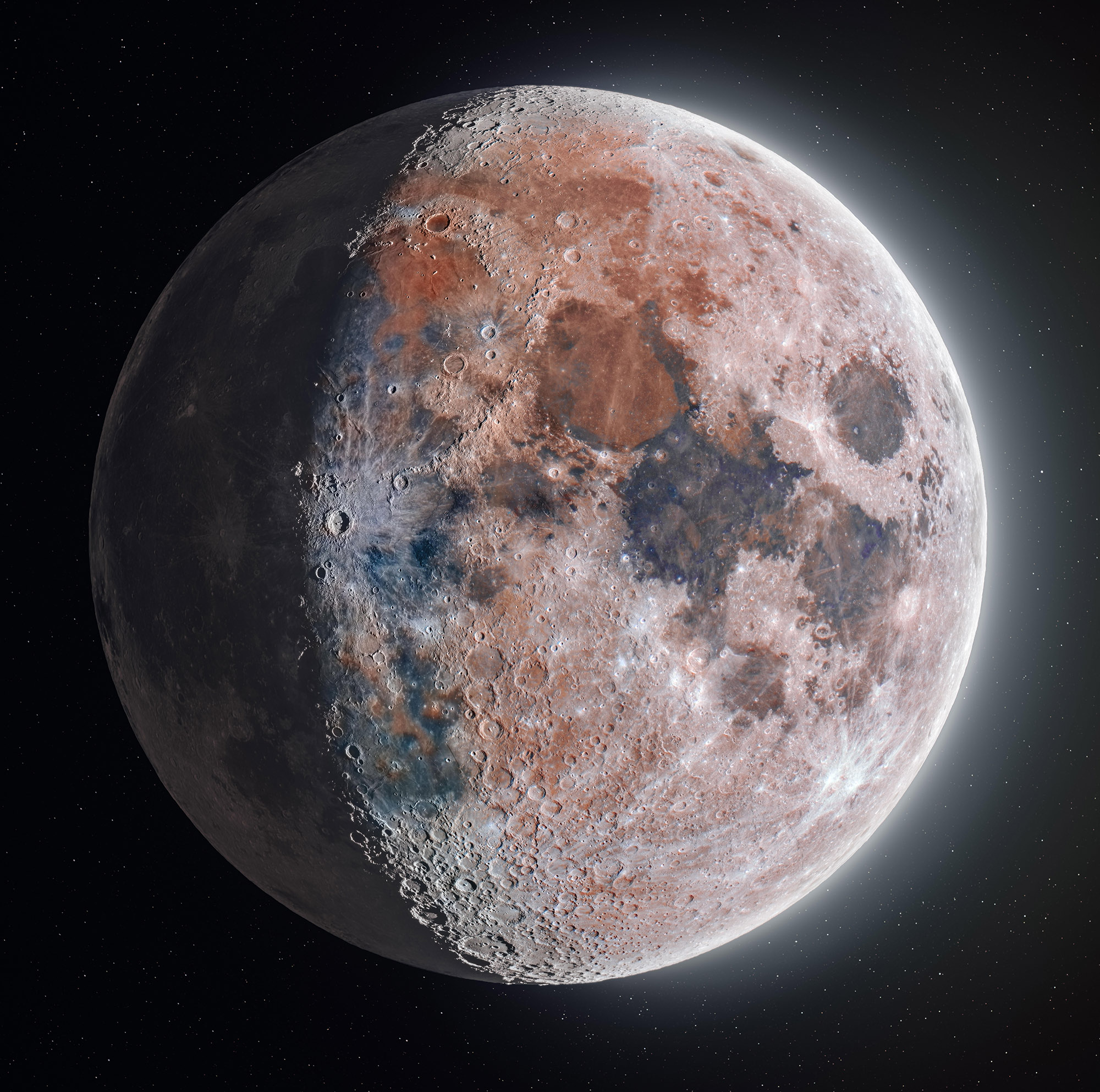|
Getting your Trinity Audio player ready… |
Fuelling a Lunar Dream: Could Water Launch a Probe from Shetland?
Imagine a rocket standing tall on one of the rugged Shetland Islands, ready to embark on an incredible journey. It’s destination? A free return trajectory around the Moon. And it’s fuel? Water, split into its fundamental components, hydrogen and oxygen, using renewable energy from the very winds and sun of the islands.
It might (to some) sound like science fiction, but the concept of using water as a propellant source for hydrolox (liquid hydrogen and liquid oxygen) engines is very real. The question is: how much water would you actually need to send a 100kg probe on such a mission from a place like Shetland?
Let’s dive into the fascinating physics and engineering challenges involved! ^_^v
The Rocket Science Behind the Splash.
Launching anything into space, especially towards the Moon, requires overcoming Earth’s powerful gravity and achieving immense speeds. This is where the concept of Delta-v (Δv) comes in. Think of Δv as the total “change in velocity” capability your rocket needs to have. For a lunar free return trajectory, starting from Earth’s surface, the required Δv is substantial – thousands of meters per second. Launching from a higher latitude like Shetland means you get slightly less help from the Earth’s spin compared to equatorial launch sites, potentially increasing that Δv requirement a little.
The efficiency of a rocket engine is measured by its Specific Impulse (Isp). Hydrolox engines are known for having high Isp, meaning they get a lot of thrust for the amount of propellant they consume. Our hypothetical engine has a 40% efficiency. This efficiency factor impacts the effective Isp the engine can achieve in the real world, making it lower than the theoretical maximum.
The Tyranny of the Rocket Equation!
The core principle governing how much propellant you need is the Tsiolkovsky Rocket Equation:
Δv=Isp⋅g0⋅ln(mf/m0)
Where:
- Δv is our required change in velocity.
- Isp is the engine’s effective specific impulse.
- g0 is standard gravity.
- m0 is the initial mass of the rocket (with propellant).
- mf is the final mass of the rocket (without propellant), also called the dry mass.
The crucial part here is the mass ratio (mf:m0). This equation tells us that to achieve a certain Δv with a given engine efficiency (Isp), you need a specific mass ratio. The higher the Δv or the lower the Isp, the larger the mass ratio must be. This means the vast majority of your rocket’s initial mass has to be propellant.
Figure 1:

This graph illustrates how the required mass ratio (initial mass / final mass) escalates rapidly with increasing Delta-v for a fixed engine efficiency (Specific Impulse). Achieving higher speeds requires a disproportionately larger amount of propellant to climb out of Earth’s gravity well, and escape the monstrous ‘homo sapiens singularis’ below.
The Dry Mass Challenge.
The dry mass (mf) isn’t just the 100kg probe. It includes the rocket’s structure, engines, fuel tanks, guidance systems, and importantly, the equipment needed to split the water and power the process using renewables. We’re assuming a structural mass fraction of 1/8. In rocketry terms, this usually relates the mass of the structure to the total mass or dry mass, and a fraction like 1/8 suggests a very lightweight structure relative to the total vehicle or dry mass. In our water-splitting scenario, we also need to account for the mass of the electrolysis unit and the power generation/storage system (solar panels, wind turbine components, batteries).
The electrolysis efficiency (~37%) tells us how much of the energy input actually goes into splitting the water. A lower efficiency means you need a more powerful, and likely heavier, power system to produce the required amount of hydrogen and oxygen within a reasonable timeframe for fuelling. This adds to the dry mass.

Putting Numbers to the Dream (An Illustrative Example).
Let’s try a simplified calculation based on some assumptions, similar to how engineers start to size a rocket:
- Target Δv: Let’s assume a challenging but plausible Δv requirement of 10,000 m/s for this mission from Shetland.
- Effective Isp: Using a typical hydrolox vacuum Isp and considering the 40% engine efficiency (interpreted as an overall efficiency factor applied to the theoretical Isp potential), let’s work with an effective Isp of around 400 seconds.
- Payload Mass: 100 kg.
- Dry Mass Estimate: This is the trickiest part. The structural mass fraction of 1/8 is very optimistic if applied to the whole vehicle. Let’s instead estimate the combined mass of the structure, engine, tanks, guidance, plus the electrolysis and power equipment. For a mission like this, this supporting mass could easily be several times the payload mass. Let’s illustrate by assuming this combined mass is 5 times the payload, or 500 kg.
- So, the estimated dry mass (mf) = Payload (100 kg) + Structure & Equipment (500 kg) = 600 kg.
“No magic conjures, no void finds, mind(s) travels, light shines…”
Now, using the Tsiolkovsky equation to find the required mass ratio for Δv=10000 m/s and Isp=400 s:
ln(mf/m0)=Isp⋅g0Δv=400 s⋅9.81 m/s210000 m/s≈2.55
mf/m0=e2.55≈12.8
The required mass ratio is about 12.8. This means the initial mass (m0) must be 12.8 times the dry mass (mf).
m0=12.8⋅mf=12.8⋅600 kg=7680 kg.
The propellant mass (mp) is the difference between the initial mass and the dry mass:
mp=m0−mf=7680 kg−600 kg=7080 kg.
This 7080 kg is the total mass of hydrogen and oxygen needed. Since water (H₂O) splits into hydrogen (H₂) and oxygen (O₂) in a mass ratio of approximately 1:8, the total mass of water required to produce this propellant is also 7080 kg (mass is conserved in the splitting).
Finally, converting mass to volume using the density of water (approx. 1 kg/litre):
Volume of water = 7080 kg/1 kg/litre=7080 litres.
The Verdict (with *Big* Caveats!)
Based on our illustrative calculation with several key assumptions (especially about the required Δv and the mass of the rocket structure and equipment), you would need on the order of 7,000 litres of water to fuel a rocket launching a 100kg probe on a free return trajectory to the Moon from the Shetland Islands using hydrolox derived from that water.
This figure is an estimate, not a precise engineering number. A real mission design would involve complex trajectory analysis, detailed mass breakdowns of every component (including the renewable power system and electrolysis unit, influenced by the 37% efficiency), and careful optimisation. A structural mass fraction of 1/8, it seems, is likely very optimistic for a real-world rocket capable of this mission profile.
Nevertheless, our concept is compelling – harnessing local, renewable resources in a unique location like the Shetland Islands to reach for the Moon. It highlights the incredible engineering challenges and the vast quantities of propellant needed for space travel, even for relatively small payloads.



Leave a Reply